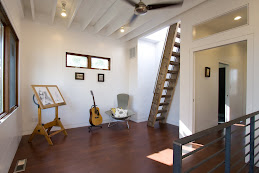Last week's torrential storms really tested the
stormwater strategies at
Montrose Green. Over 4.5" of rainwater came down in just 1 hour. For Philly, this is a month's worth of rain! The video below shows the
stormwater planter receiving runoff water from both the street and sidewalk. As you can see, there is still a pool of water puddling into the street, but much of the runoff is directed into the planter. Here it is allowed to collect and is held until it naturally percolates back into the ground. We did notice that after clearing the intake channels of debris- mostly from small fallen flowers from the tree above- the flow of water increased significantly. The planter did begin to fill up, but since the grade of the planter sits below street level and there is plenty of clean stone laid below the planter bed, the water was able to infiltrate adequately and any standing water disappeared within minutes.
The second video (below) is very short clip that show what typically happens in Philly in a heavy storm. This clip shows our neighbor's downspout completely overflowing where it meets the boot (the short cast iron pipe that leads into the ground.) Typically, the roof runoff on
rowhouses is channeled through a downspout, into a boot, and directly into the city's
stormwater/sewer pipe which goes to the water treatment plant, as opposed to making its way into the ground or to the river. You can imagine what the poor treatment plant must have been going through last week.
Essentially what is happening here is the main
stormwater/sewer pipe that runs under the middle of the street is completely full due to the amount of intake and all the connections from
rowhouses are backed up. Many times these connection pipes run through people's basements and this is how they get flooded- which happened all over the city last week. And since the system is 'combined'-
stormwater AND sewer in the same pipe- what you get in your basement is, well...let's say, it's not pretty. At
Montrose Green, our only piped connection to the city's
stormwater system is from our emergency overflow drain in the backyard and we barely had any water going through that pipe to the street during the storm and even with all the infiltration we are doing near the house, we had no water in the basement. Whew!
Our rain barrel + rain garden system was also pushed to the max, even with the flow of water dramatically reduced by the green roof above (which can absorb a lot of water but eventually gets fully saturated). Below you can see an image of the completely full rain barrel, with water overflowing into the adjacent trough. The trough empties into a raised planter (rain garden) through a series of horizontal holes. Similar to the planter out front, we laid a large amount clean stone under the bed for drainage and even with all the water it was taking on, it never did fill up.

After we took this photo, we opened the valves at the bottom of the barrel to let some of the captured water flow into the yard as well as the planter to give some relief to the rain barrel. The rear yard is currently dirt/mulch- which is
pervious- so any overflow water was able to be absorbed directly into the ground. Eventually we plan to have sand set concrete
pavers installed which will still allow water to infiltrate naturally.













